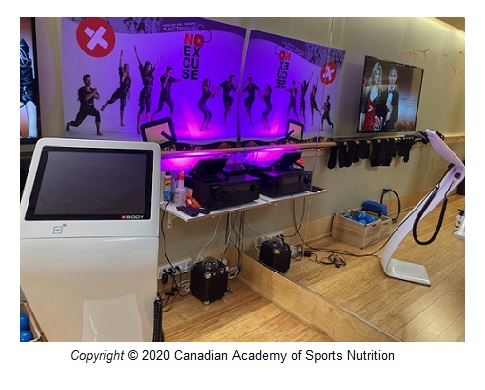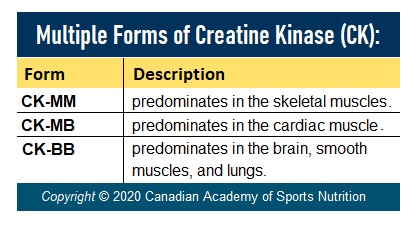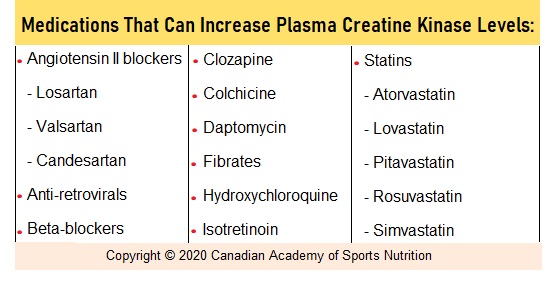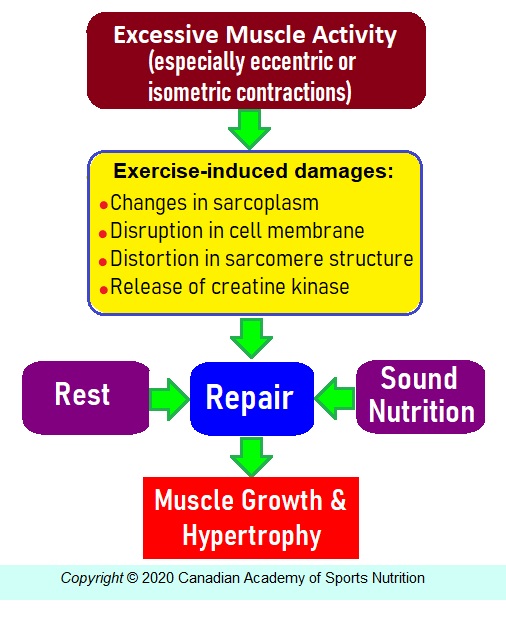EMS (electrical muscle stimulation) is a new trend in fitness and sports, eliciting muscle contractions using electrical impulses. Also known as electromyostimulation, EMS is a high-intensity whole body workout in which low frequency electrical impulses are used to stimulate the muscle fibers not engaged in conventional training.
The concern with many EMS trainees regarding an elevation in blood levels of creatine kinase prompted us to write this article.
EMS training induces microscopic tears and damage to the skeletal muscle fibers and connective tissues, leading to an increase in creatine kinase (CK) activity and its leakage into the outside of the cells. In fact, any prolonged, heavy, or repetitive exercise can elevate the circulating CK.
Creatine kinase (CK) is an enzyme that catalyzes the reversible transfer of phosphate from phosphocreatine (PCr) to ADP to form creatine and ATP. An increase in plasma CK is usually associated with DOMS (delayed onset muscle soreness). The severe and rapid breakdown of muscle fibers leading to the release of myoglobin, a muscle protein, into the bloodstream is called “rhabdomyolysis“.
Interestingly, CK has three different forms: CK-MM, CK-MB, and CK-BB (see the table).
Causes of Increase in Plasma Creatine Kinase (CK):
A) Increased Total CK and CK-MB:
1) Myocardial infarction (Heart attack)
2) Cardiogenic shock
3) Myocarditis (inflammation of the heart muscle)
4) Right ventricular failure
5) Valvular defects
6) Heart surgery
7) Cardiac contusion
B) Increased Total CK:
1) Vigorous exercise, including EMS training
2) Endocrine disorders
3) Myositis (inflammation of a muscle)
4) Crush injury or trauma
5) Surgery
6) Rhabdomyolysis
7) Malignant hyperthermia
8) Epileptic attack
9) Muscular dystrophies (such as Duchenne and Baker)
10) Muscular spasm
11) Myotonic dystrophy
12) Myasthenia gravis
13) Inflammatory myopathies
14) Malignant tumors
15) Pulmonary embolism
16) Diseases of the liver, pancreas, and GI tract
17) Pregnancy
18) Neuroleptic Malignant Syndrome
19) Medications.
20) Alcoholism
21) Electrolyte disorders: low levels of potassium, sodium, and phosphate
Exercise-Induced CK Elevation Might Be A Good Sign:
There is a famous quote in fitness, especially among bodybuilders, that says: “if it doesn’t burn, it doesn’t grow.” In other words, if you are exercising to grow your muscles and you don’t feel burning sensations and soreness in your muscles, you may not be growing them. This is somehow true!
As previously mentioned, exercise-induced muscle soreness results from microscopic muscle damage, which is associated with plasma CK elevation. The exact mechanisms of muscle growth are not fully known yet. However, it has been postulated that muscle damage followed by repair mechanisms leads to muscle growth. Studies using radioactive tracer show that muscle lengthening occurs mainly by adding new sarcomeres to the fiber at the junction of muscle and tendon.
Approach To Exercise-Induced CK Elevations:
Depending on factors such as race, gender, and activity, the normal range of plasma CK levels in a healthy adult is 30 to 200 U/L (units per liter). Plasma CK levels may increase as much as 30 times above normal within 24 hours of a strenuous exercise. CK elevations are greatest in untrained individuals and new gym members.
Commonly referred to as the most “popular” marker of muscle damage, delayed onset muscle soreness (DOMS) is primarily induced by eccentric or isometric contractions, which are associated with plasma CK elevation. Studies show that the magnitude of muscle damage induced by EMS-evoked isometric contractions is comparable to that induced by maximal voluntary eccentric contractions.
The magnitude of muscle damage caused during EMS training is significantly reduced if the second EMS session is performed 2–4 weeks later. Studies indicate that the pre-conditioning of muscles can attenuate the magnitude of EMS-evoked muscle damage.
What To Do With Higher Plasma CK Levels?
1) If you are a healthy person and your plasma CK level was higher than normal after an exercise session, it is considered a normal phenomenon. You may measure your plasma CK levels again after one to two weeks of rest.
2) If you are taking any of the medications listed in the chart and your plasma CK levels are higher than normal, you need to consult the prescribing physician.
3) Higher plasma CK levels require immediate medical attention in the following conditions:
a) association with medical conditions, especially heart, brain, or liver diseases.
b) appearance of myoglobin in urine (myoglobinuria).
c) and association with severe muscle weakness, pain, swelling, and stiffness.
Studies show that supplementation with vitamins C and E is effective in attenuating exercise-induced muscle damage and inflammatory responses. Glutamine supplementation can also reduce the effects of delayed onset muscle soreness (DOMS).
Abazar Habibinia, MD, DFN
Executive Director of The Canadian Academy of Sports Nutrition







